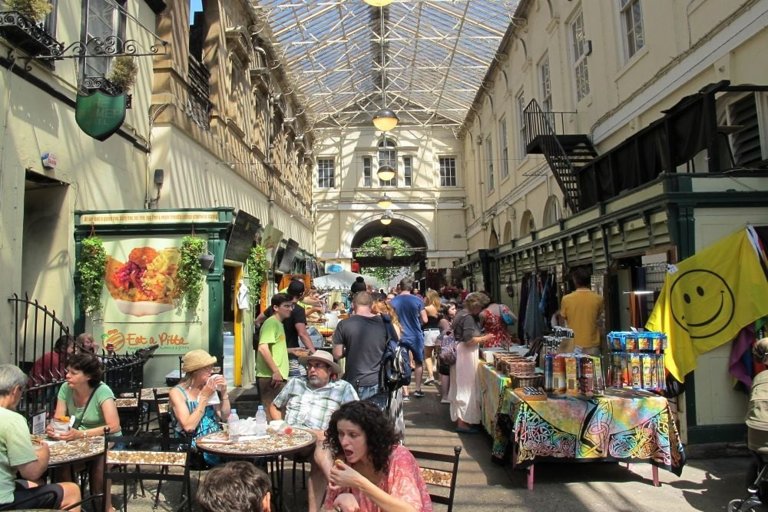Food & Dining
Street Food Markets Fuel Economic Buzz in Bristol’s City Centre
Weekend markets are becoming a magnet for both locals and tourists, blending culinary innovation with community events that bolster the city’s cultural reputation.
2025-08-05 08:04
By Olivia Barrett

Bristol’s city centre is experiencing a surge of energy thanks to its growing network of street food markets, which now operate on weekends and throughout the summer evenings. What began as a handful of vendors setting up in public squares has evolved into a thriving hub of culinary and cultural activity, drawing thousands of visitors every week.
St Nicholas Market, already a staple of the city’s food scene, has been joined by newer pop-up locations in Harbourside and Temple Meads. Each market offers a blend of cuisines, from wood-fired pizzas to Caribbean jerk chicken and vegan curries, showcasing Bristol’s reputation as one of the UK’s most diverse and experimental food cities.
The economic benefits are significant. According to city officials, street food markets generate millions of pounds in revenue annually, with a portion funnelled directly into the local economy. Vendors often source ingredients from nearby farms and suppliers, ensuring that the benefits of the boom ripple out into rural areas as well as urban centres.
Local entrepreneurs view the markets as springboards for bigger opportunities. Many permanent restaurants in Bristol trace their roots back to a food truck or market stall. For aspiring chefs, the low overhead costs and direct customer feedback offer a chance to refine dishes before committing to larger ventures.
Tourists have also embraced the scene, often citing Bristol’s markets as highlights of their visit. Visitors from London and abroad describe the atmosphere as distinctly different from traditional dining, with communal tables, live music, and a sense of spontaneity. The vibrancy has become part of the city’s brand, boosting its reputation as a cultural hotspot.
Street food is also providing new opportunities for minority and immigrant communities. Vendors from Syria, Jamaica, and Poland, among others, are using their stalls to introduce regional flavours to a wider audience. These contributions enrich Bristol’s multicultural identity and foster cross-cultural understanding through food.
Despite its success, the boom has brought challenges. Health inspectors and council officers are working to ensure that rapid growth does not compromise safety standards. Organisers have introduced strict hygiene rules and mandatory waste reduction practices, which most vendors support as essential to maintaining customer trust.
Residents living near popular market sites have voiced concerns about noise and congestion. In response, the city council has trialled new zoning measures and adjusted opening hours. While not all issues are resolved, community engagement has helped to find compromises that balance the interests of businesses and neighbours.
Sustainability has become a defining theme. Many stalls use biodegradable packaging and offer discounts to customers who bring reusable containers. Environmental activists say Bristol’s approach sets an example for other UK cities grappling with how to combine urban vibrancy with ecological responsibility.
Musicians and performers are also benefitting, as markets provide platforms for live acts ranging from jazz bands to local DJs. The mix of food and culture creates a festival-like atmosphere that extends beyond eating, giving visitors reasons to linger and spend more money.
City officials hope the markets will contribute to long-term regeneration projects. By drawing consistent foot traffic, they are revitalising areas previously struggling with empty shopfronts. In some cases, food markets have been credited with helping attract new businesses, from boutiques to art galleries, eager to tap into the lively crowds.
Data from Visit Bristol shows that social media is amplifying the trend. Posts tagged with #BristolStreetFood regularly gain thousands of interactions, spreading awareness beyond the city and encouraging day-trippers to visit. Influencers have played a key role in this growth, partnering with vendors to showcase the most photogenic dishes.
As the movement matures, stakeholders are considering how to expand without losing authenticity. Organisers stress that the markets’ success lies in their grassroots spirit, with independent traders at the core. For now, Bristol’s street food boom shows no signs of slowing, continuing to energise the city’s centre both economically and culturally.